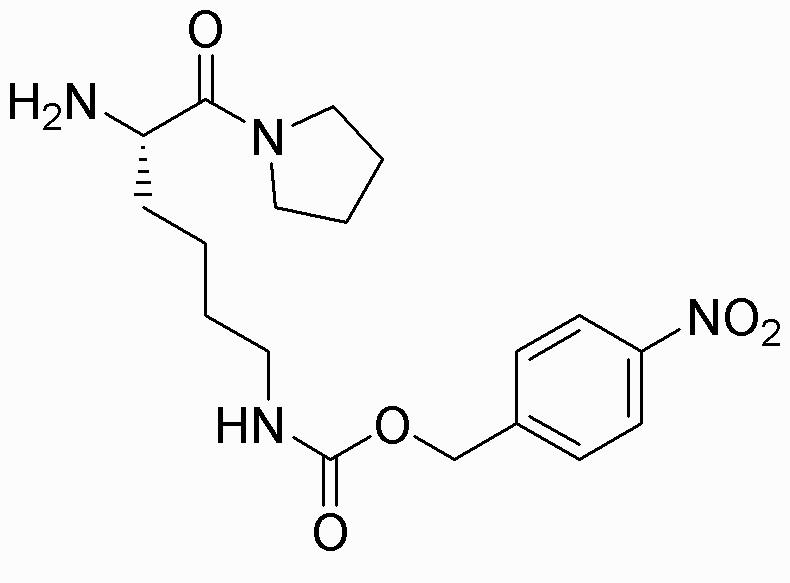Ne-4-Nitro-Z-L-lysine pyrrolidide is widely utilized in research focused on:
- Peptide Synthesis: This compound serves as a valuable building block in the synthesis of peptides, particularly in the development of novel therapeutics.
- Drug Development: Its unique structure allows for the exploration of new drug candidates, especially in targeting specific biological pathways.
- Biochemical Research: Researchers use it to study enzyme interactions and protein modifications, providing insights into cellular processes.
- Diagnostics: The compound can be employed in the development of diagnostic tools, enhancing the accuracy of disease detection.
- Material Science: Its properties make it suitable for creating advanced materials, such as drug delivery systems that improve the efficacy of treatments.
General Information
Properties
Safety and Regulations
Applications
Ne-4-Nitro-Z-L-lysine pyrrolidide is widely utilized in research focused on:
- Peptide Synthesis: This compound serves as a valuable building block in the synthesis of peptides, particularly in the development of novel therapeutics.
- Drug Development: Its unique structure allows for the exploration of new drug candidates, especially in targeting specific biological pathways.
- Biochemical Research: Researchers use it to study enzyme interactions and protein modifications, providing insights into cellular processes.
- Diagnostics: The compound can be employed in the development of diagnostic tools, enhancing the accuracy of disease detection.
- Material Science: Its properties make it suitable for creating advanced materials, such as drug delivery systems that improve the efficacy of treatments.
Documents
Safety Data Sheets (SDS)
The SDS provides comprehensive safety information on handling, storage, and disposal of the product.
Product Specification (PS)
The PS provides a comprehensive breakdown of the product’s properties, including chemical composition, physical state, purity, and storage requirements. It also details acceptable quality ranges and the product's intended applications.
Certificates of Analysis (COA)
Search for Certificates of Analysis (COA) by entering the products Lot Number. Lot and Batch Numbers can be found on a product’s label following the words ‘Lot’ or ‘Batch’.
*Catalog Number
*Lot Number
Certificates Of Origin (COO)
This COO confirms the country where the product was manufactured, and also details the materials and components used in it and whether it is derived from natural, synthetic, or other specific sources. This certificate may be required for customs, trade, and regulatory compliance.
*Catalog Number
*Lot Number
Safety Data Sheets (SDS)
The SDS provides comprehensive safety information on handling, storage, and disposal of the product.
DownloadProduct Specification (PS)
The PS provides a comprehensive breakdown of the product’s properties, including chemical composition, physical state, purity, and storage requirements. It also details acceptable quality ranges and the product's intended applications.
DownloadCertificates of Analysis (COA)
Search for Certificates of Analysis (COA) by entering the products Lot Number. Lot and Batch Numbers can be found on a product’s label following the words ‘Lot’ or ‘Batch’.
*Catalog Number
*Lot Number
Certificates Of Origin (COO)
This COO confirms the country where the product was manufactured, and also details the materials and components used in it and whether it is derived from natural, synthetic, or other specific sources. This certificate may be required for customs, trade, and regulatory compliance.


